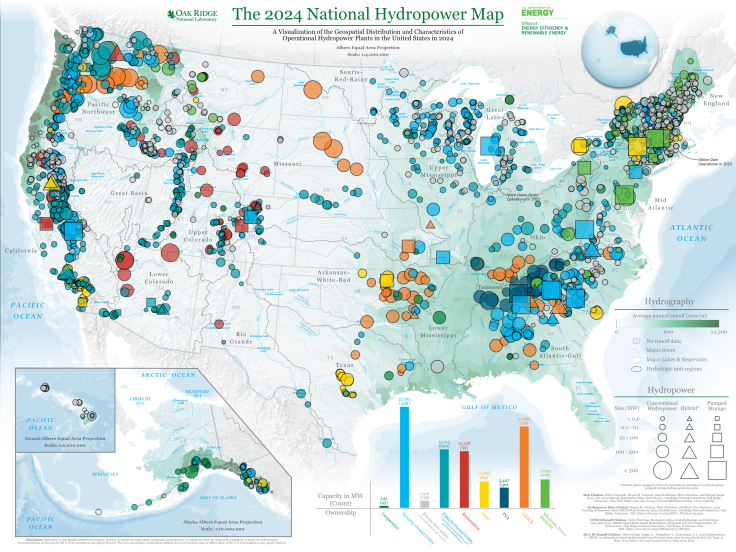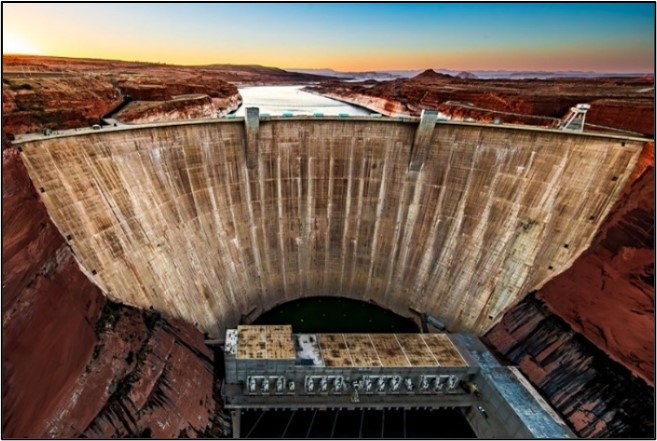Hydropower is a crucial source of on-demand energy in the United States that makes an essential contribution to a secure power grid. Effective management and planning of Hydropower assets depends on up-to-date, detailed, and reliable data. The 2025 update of Oak Ridge National Laboratory’s Existing Hydropower Assets (EHA) databases meets this critical need by providing a comprehensive analysis of the U.S. hydropower fleet—from the largest utility-scale plants, such as Grand Coulee Dam and Hoover Dam, to the hundreds of small facilities generating under 1 megawatt (MW).
Compiled and maintained for the U.S. Department of Energy’s Water Power Technologies Office, the EHA databases track operational hydropower and pumped storage hydropower facilities across the United States and Puerto Rico, as well as retired facilities. EHA, first established in 2014, has become a cornerstone of the HydroSource platform, underpinning widely used resources such as the National Hydropower Map.
Core Features of the 2025 EHA Databases
The latest EHA databases continue to expand and refine hydropower data tracking for improved analysis and decision-making nationwide. Key features include:
- Updated facility information, reflecting essential metrics such as capacity changes and operational status.
- Unit-level turbine data, organized as a companion to the plant-level database, enables detailed assessments of plant efficiency, performance optimizations, and targeted maintenance strategies.
- Comprehensive coverage of the U.S. hydropower fleet, including plants smaller than 1 MW, which are often overlooked in other federal datasets.
- Detailed facility lifecycle tracking, capturing transitions from new operation to, potential refurbishment, and retirement.
- Consistent unique identifiers that enable linking between multiple datasets, providing deeper insight into specific plants.

A Tool for Decision-Making and Analysis
The EHA databases directly support critical research, industry analysis, and policymaking across the hydropower community. Stakeholders of all kinds rely on EHA for feasibility assessments, capacity studies, infrastructure planning, and much more.
The EHA also serves as the foundation for other datasets—including generation histories and capacity factor analyses—which scientists use in key research areas such as plant efficiency, grid resilience, and regional impacts.
Explore the 2025 Existing Hydropower Assets Plant Database Here
Explore the 2025 Existing Hydropower Assets Unit Database Here
Explore EHA-related datasets, including:
Capacity Plant Database, 2005-2023
Net Generation Plant Database, 2003-2023
Gross Generation Plant Database, 2003-2023
Capacity Factor Plant Database, 2005-2023
